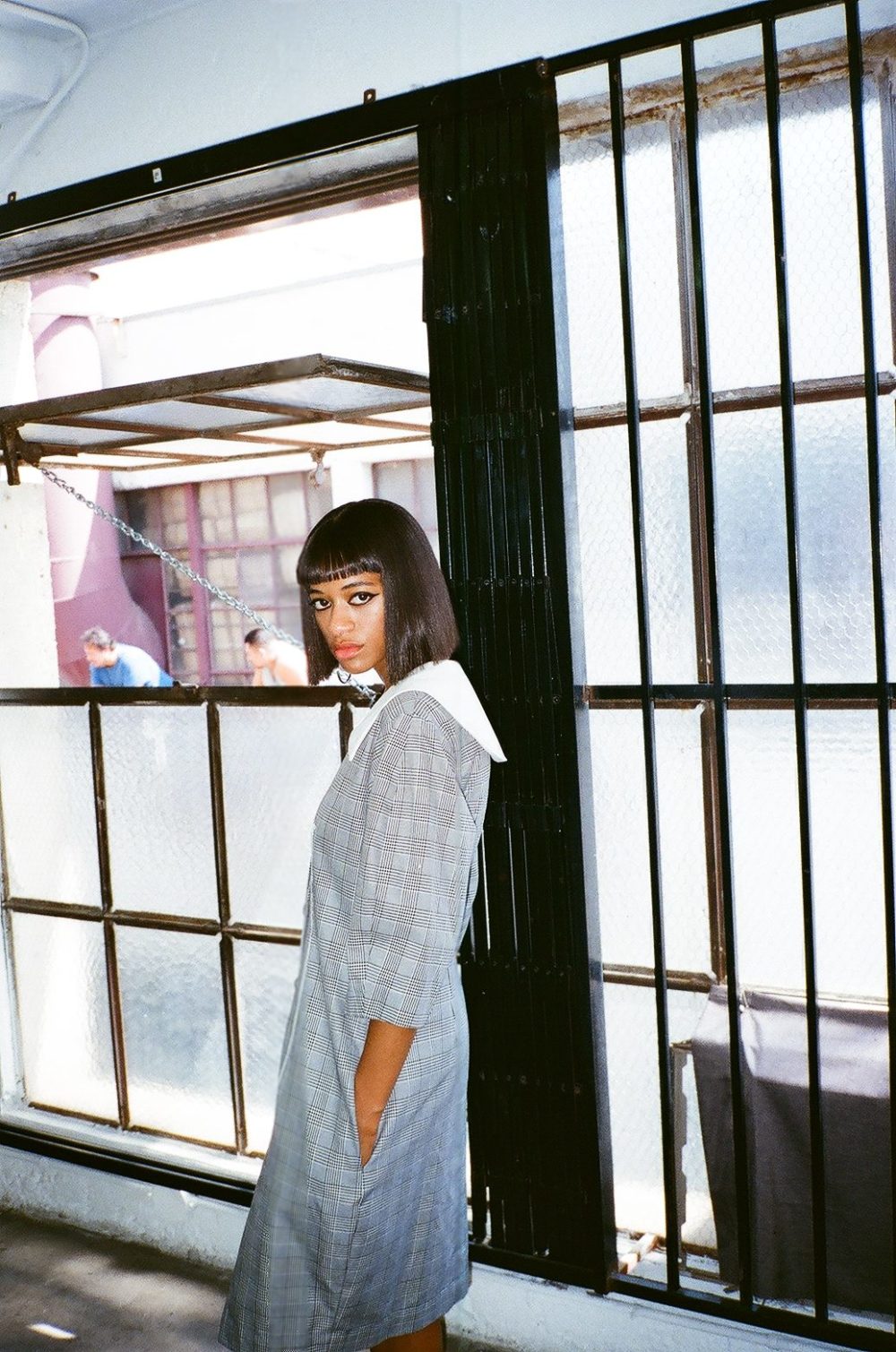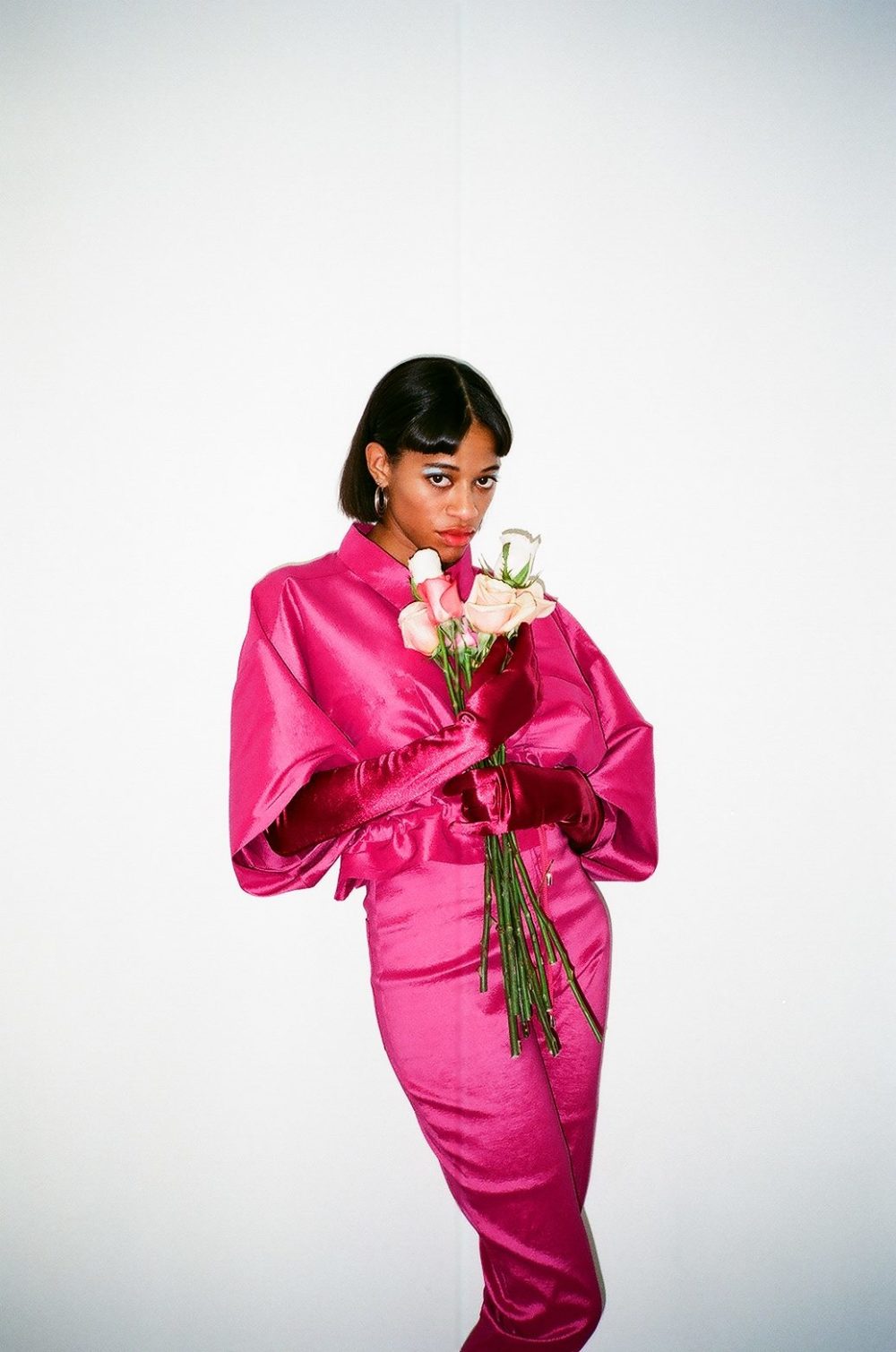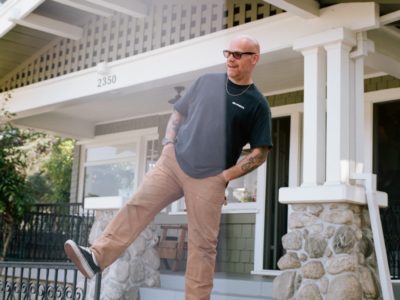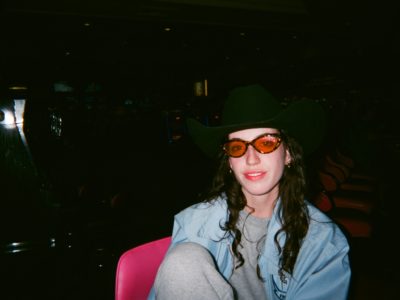Kilo Kish, Musician
INTERVIEW BY : KHALILA DOUZE | PHOTOS BY : JULIANN MCCANDLESS
Kilo Kish is at a turning point. Last month, the multi-faceted artist known for her hushed, category-defying voice, contemplative explorations in visual art and design, and high-profile collaborations, released a new EP, Mothe. It’s been over two years since Kish’s debut full-length Reflections In Real Time exposed listeners to an inner world of fears, anxieties, and existential pondering. At the time, the charmingly vulnerable and unpolished collection of tracks mirrored her elusiveness as an influential creative straddling the line between the commercial and the artistic.
Today, a more comfortable and spiritual Kish has spent a lot of time alone, finding clarity and calm as a transplant within L.A.’s tranquil isolation. Inspired by humanity’s complicated relationships to technology and nature, Mothe is a symbolic, sonic reflection on upgrade and renewal. Produced by her long-time collaborator Ray Brady (a.k.a. Rrreymundo), the EP infuses elements of synthpop, industrial techno, and punk rock, expanding Kish’s range as a musician. If her last album was a regurgitation of self-doubt, Mothe is the transformative path to self actualization.
Kilo Kish’s humble, reserved demeanor emanates over a phone call from Soho House in Manhattan, where she’s gearing up for a fashion week performance. But, as she details how Mothe came together, it’s clear that Kish has been anything but compromising with her latest project, staying almost painfully true to her vision. Kilo Kish is ready to level up, and Mothe is the proof.
What pushed you to make this EP? Do you remember the day you started writing Mothe?
I don’t really work on music until the title comes to mind. I just wait until that happens, and when it does, I print it out on a white sheet of paper and put it on my wall. If I have visual ideas, I try and create an identity I think goes with the title. I am very organized so I have 3-4 phases of “tests” when I am working within a project. I create presentations around the visual identity to communicate with my team better. I work on the music after I determine some of this visual stuff. [My last album] Reflections in Real Time was focused on the inner workings of me, whereas Mothe is focused more on relationships with the outside world and technology, and all of the systems that create balance in our world.
Were you spending a lot of time in nature?
I wasn’t, but I think I just was yearning for it and just becoming more spiritual in general. I’m always watching nature documentaries. I’ve always questioned whether any of our human designs will ever be any greater than what’s already found in nature. My last project was so much about people. This project was more about the electricity of life in general, and where we all fit within that.
You mentioned becoming more spiritual. How so?
I’ve always gone to church growing up, but God plays a bigger role in my life now than when I was younger. Growing spiritually and taking time to myself to really be within myself and get out of the desires that I have as a person has helped me to understand that I should be a steward of my own creativity. [To] not only do things for myself, but for the sake of other people, like in the future. Before, my work was very insular-centered and now, through my spiritual practice, I’ve just been focused on trying to convey feelings and ideas that are palatable for everyone.
Mothe sounds really different. It’s industrial. What were you thinking about in terms of the sound?
I worked with one producer on the project, Ray Brady, who also produced the majority of Reflections in Real Time. When I found out that I wanted to make my humble ode to nature and the world we live in, I sent him a bunch of different keywords. “Elegance” was one of the keywords that I gave him. And, also “neurons firing” and “electricity” and all of these different random ideas that he somehow is able to unjumble and make into music. We’ve worked together for a while now, so he’s gotten better at understanding the tone that I want. I definitely wanted to bridge a lot of my actual musical influences with this nature concept. I wanted to go back into the things that I really enjoy listening to. I really love ‘90s [and] early 2000s pop. I love trip-hop. I love electronic industrial. I really wanted to have the juxtaposition of these super inorganic sounds with the concepts of nature.
The first song is called “San Pedro.” What’s in San Pedro?
San Pedro is actually a street me and Ray lived on when we made the project. Especially with this project more than any of my other projects, I wanted to keep it as organic as possible. I didn’t really do too many rewrites or changes. I wanted to be as fluid as I could. Whereas with Reflections, everything is super choreographed or super idealized and thought out, even down to the titles. With this one, I wanted to do the opposite. That was the first one that we made on the project as well.
Going to the next level doesn’t always feel like an upgrade. It feels really intense, as if you’re going backwards a little bit for a long time.
How long have you lived in LA?
I’ve been in LA for almost five years now.
How has moving to LA changed your music?
It’s completely influenced it, and I think for the better. It’s given me the space to really separate myself. I’ve been super isolated in LA, which has actually helped my work because it’s allowed me to get to the heart of what I’m trying to do. It doesn’t allow me distractions. I get very distracted in New York, like going out and seeing everyone and having so much stuff to do all the time. In LA, there’s so much space. There might be weeks before someone calls you. It’s really fun to just be by myself. I feel like I’ve been in this cocoon this whole time. Mothe is the project that breaks open a little bit, and I think going forward I’m ready to be back around. For a while, I really wanted to just find out who I was and figure out what kind of work I actually want to make. [Asking myself], “Is it because my friends are making it or is it because I’m influenced by what’s so blatantly cool right now?” I didn’t want any of those distractions, so LA is a perfect place to create if you don’t want that. It feels weird at first. You kind of go through a crazy, Who am I? existential crisis, but after you learn so much more about yourself.
It always makes me so energized to be alive and to be able to have a chance at the things I want.
Speaking of transformation, you told Paper that Mothe indicates a “less pretty” transformation that you went through. What were some of those changes?
I just wanted to highlight the fact that change doesn’t always feel like, “I’m moving on up! I’m going to the next level.” Going to the next level doesn’t always feel like an upgrade. It feels really intense, as if you’re going backwards a little bit for a long time. To fully execute your creative ideas takes a lot of focus. For me, Reflections was a training ground for that. Every time you work with people it adds additional opinions and additional outlooks and additional ways of doing things. And, it’s really important for [me], the artist or the creative, to hold steadfast to what I initially set out to do. With Mothe, I had a clear picture in my head of what I wanted it to be. I had to hold that picture for 6 months, 8 months, a year so that I could stay true to what it is that I had initially dropped into my head. I feel like no idea is really yours, it’s just your job to run with it. You don’t really come up with ideas, they just kind of come to you. So for me, I just really try to do the idea justice. I try to give that as much care and consideration as I can. Along the way, some of those changes and holding that little egg in your hands is like… you don’t wanna drop it. That’s what I mean by going through changes. I had a lot of fears and anxieties and worries, as you can tell on Reflections. It felt like I was going backwards for a little while, but randomly, there’s a clearing and you’ve come through the other side. That’s what this project is about.
Mothe is also inspired by the video game aesthetic. What is about gaming that allows you to tell the story that you want to tell?
I’ve always been fascinated by social media and the way that we communicate through technology with each other. You see photos online and you’re like, “Is that a real person? Is that not a real person?” There’s so many “digital” people online now as social media influencers. I find that really fascinating and I wanted to explore the idea of recreating yourself through this. For example, your skin rejuvenates every 7 months or years (I don’t remember the actual number), the way that your body changes, the way a cut it will heal itself. I wanted to explore that digitally, so I created myself into a video game character. I worked alongside a close friend and another great musician, Mike Gao, who helped me to materialize a game world where I could fall off the edge of the world itself and rejuvenate. I wanted to see if I’d feel anything destroying the digital version of myself and rebuilding it up. It was really interesting to sit there with him and be like, “No my nose doesn’t look like that. My eyes look likes this,” just recreating myself.
I really inspired by a video game I used to play when I was a kid called Bust A Groove. It was like kind of the precursor of DDR. It’s weird because I was trying to trace back some of my musical influences. I wasn’t really old enough to be out in a dance scene or clubs, I was like 8 or 9 years old. I was trying to figure out for what reason I liked those types of [sounds], and I traced it back to that one game.
You did an installation project called Mothe earlier this year. What was that like?
I like to do interactive things. We had a video game film, like some footage from the game world that I made with Mike Gao, and we had some video of the caterpillar version of a moth coming out of the little chrysalis—like a 24 hour long process of this animal writhing and fighting to get out of a shell. Just the effort that it would take to do something like that. I always feel so calmed when I watch a documentary like that because nothing in my life is that hard. This little thing just got born and it has to has to swim all the way to the sea? It also has to swim against vultures and all these other things? It always makes me so energized to be alive and to be able to have a chance at the things I want. So, we had some video of that just to show the effort of birthing yourself. And then we had these Roland drum machine pedals that we attached to the wall. We had 20 of the key sounds from the project, some strings, some bass sounds and drums, and people could make beats by playing the different pads with each other and make music.
What are you most inspired by right now?
In my free time, I’ve been trying to learn guitar and focus more on music stuff, just because I kind of started music really randomly. It wasn’t something I thought I would do. Now I’m later on in life trying to backstep a little bit and see what I didn’t learn. I’m listening to random records that we have at the house and [trying to] be as open to whatever genre or style. I’m not really focused in on anything specific, I’m kind of just like leaving it all open until the next idea drops into my head. I have the title for sure for my next album, but I don’t really have much of anything else.
You’ve said that this project is kind of like putting a flag down on a bridge between before and where you’re attempting to go next. Where is the bridge going?
Over the past couple of years, or at least in my LA years, I learned a lot about what it means to be an artist or a creative. I’ve had to do so many projects super DIY and indie. Also, having Ray around [has] taught me so much about music and made so many mental links that I didn’t make before. Having to actually make a full-length record was different than this. Mothe is an EP and it’s a short, abridged version of an idea. We’re building stuff around it, but when I make my next album, I’m way more prepared for everything that goes into it, like videos and packaging and merchandise. I definitely want to continue to push the envelope as much as possible, because I’m trying to find my space as an artist within the community. Wherever it goes, I don’t see myself settling into anything expected. I never intended to make music, so for me making music was something that was just supposed to happen. I try to leave as much room as possible for serendipitous, miraculous, random stuff. I don’t want to be the person that overthinks it too much and then ends up not doing the right thing. I want to allow for the answer to just appear.
Photography and Styling by: Juliann McCandless
Makeup Artist: Amy Strozzi
Hair Stylist: Tiago Goya
Styling Assistant: Branden Ruiz
Creative Producer: Victoria Jesionek
Production Assistant: Arianne Cortez




























